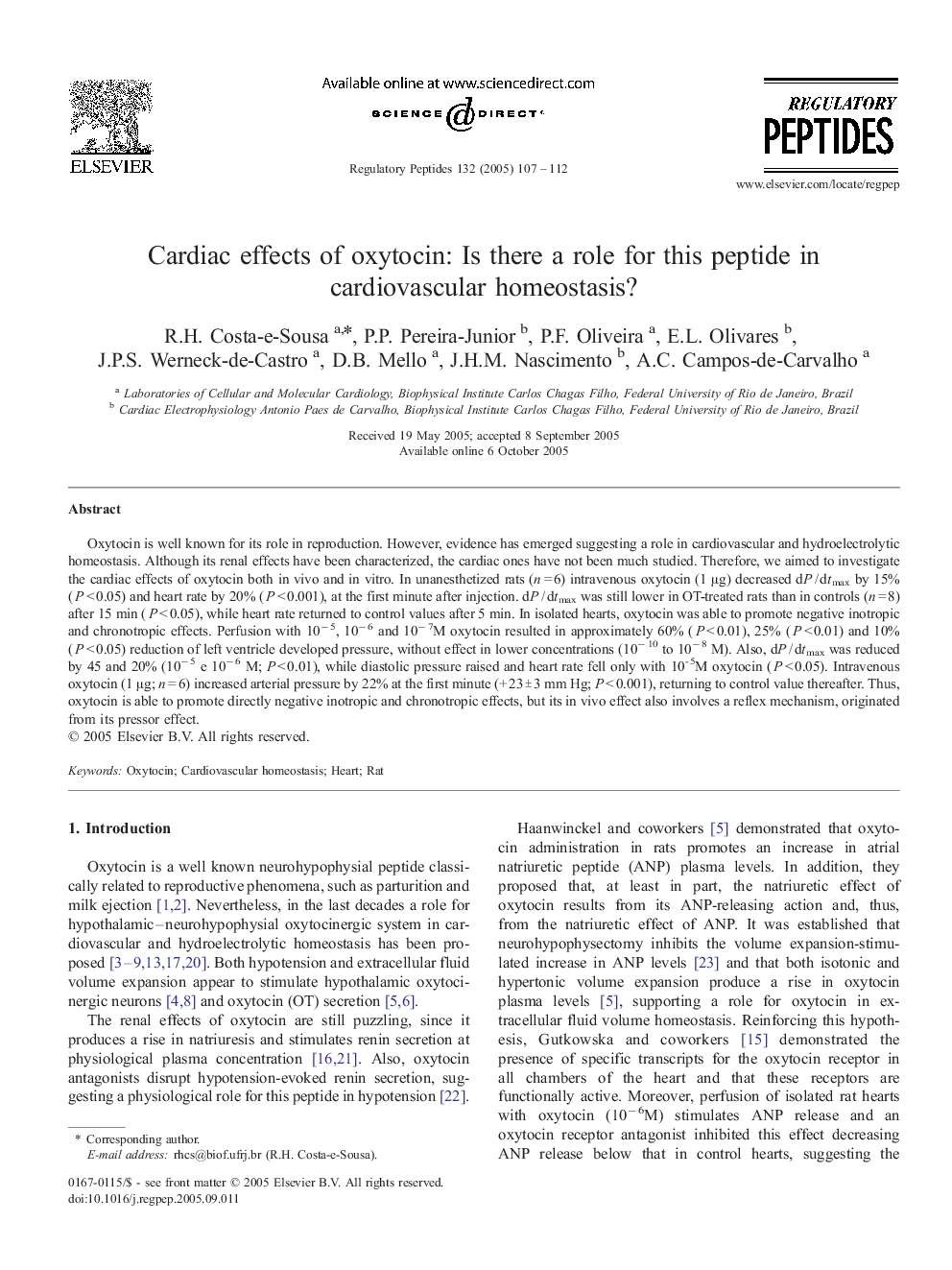| Article ID | Journal | Published Year | Pages | File Type |
|---|---|---|---|---|
| 9894358 | Regulatory Peptides | 2005 | 6 Pages |
Abstract
Oxytocin is well known for its role in reproduction. However, evidence has emerged suggesting a role in cardiovascular and hydroelectrolytic homeostasis. Although its renal effects have been characterized, the cardiac ones have not been much studied. Therefore, we aimed to investigate the cardiac effects of oxytocin both in vivo and in vitro. In unanesthetized rats (n = 6) intravenous oxytocin (1 μg) decreased dP / dtmax by 15% (P < 0.05) and heart rate by 20% (P < 0.001), at the first minute after injection. dP / dtmax was still lower in OT-treated rats than in controls (n = 8) after 15 min (P < 0.05), while heart rate returned to control values after 5 min. In isolated hearts, oxytocin was able to promote negative inotropic and chronotropic effects. Perfusion with 10â 5, 10â 6 and 10â 7M oxytocin resulted in approximately 60% (P < 0.01), 25% (P < 0.01) and 10% (P < 0.05) reduction of left ventricle developed pressure, without effect in lower concentrations (10â 10 to 10â 8 M). Also, dP / dtmax was reduced by 45 and 20% (10â 5 e 10â 6 M; P < 0.01), while diastolic pressure raised and heart rate fell only with 10- 5M oxytocin (P < 0.05). Intravenous oxytocin (1 μg; n = 6) increased arterial pressure by 22% at the first minute (+ 23 ± 3 mm Hg; P < 0.001), returning to control value thereafter. Thus, oxytocin is able to promote directly negative inotropic and chronotropic effects, but its in vivo effect also involves a reflex mechanism, originated from its pressor effect.
Related Topics
Life Sciences
Biochemistry, Genetics and Molecular Biology
Biochemistry
Authors
R.H. Costa-e-Sousa, P.P. Pereira-Junior, P.F. Oliveira, E.L. Olivares, J.P.S. Werneck-de-Castro, D.B. Mello, J.H.M. Nascimento, A.C. Campos-de-Carvalho,
